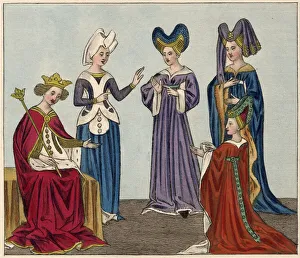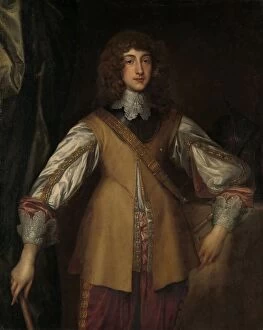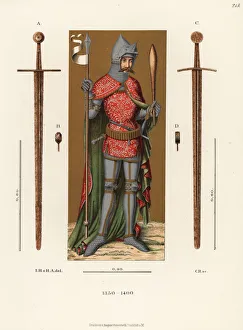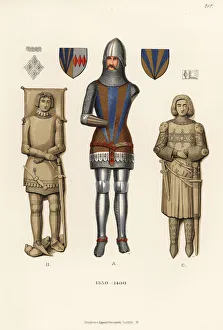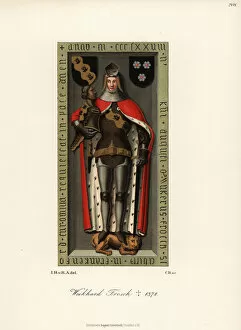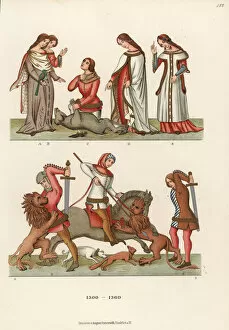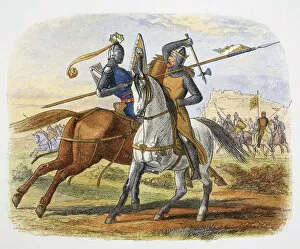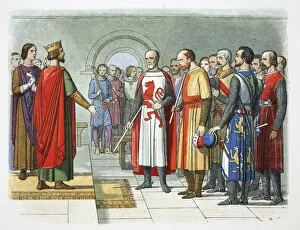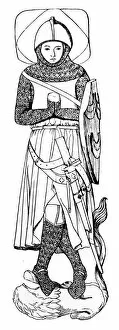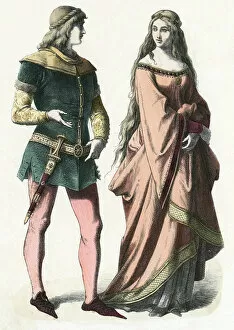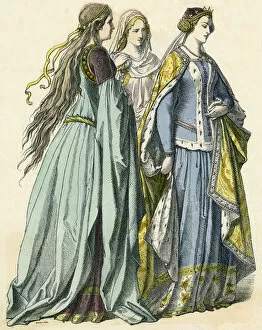Surcoat Collection
"The Surcoat: A Symbol of Medieval Fashion and Power" In the 13th century, during the reign of Edward I, King of England from 1272
All Professionally Made to Order for Quick Shipping
"The Surcoat: A Symbol of Medieval Fashion and Power" In the 13th century, during the reign of Edward I, King of England from 1272, a remarkable garment known as the surcoat emerged. This iconic piece was not only a fashion statement but also held significant historical importance. Artists like Rosalind Thornycroft captured its essence in their works, showcasing high-waisted houppelandes with turned-down collars and V-necks. These gowns were worn by both German noblewomen and English ladies in the 14th century, exuding elegance and sophistication. The surcoat was not limited to women's attire; it found its place among knights as well. German knights donned this distinctive garment over their armor during battles in the late 14th century. It served as a protective layer while displaying their coat of arms proudly. Medieval archers armed themselves with crossbows and arrows but also sported surcoats that added an element of style to their practicality on the battlefield. The combination of functionality and fashion made these archers stand out amidst chaos. Even beyond Europe's borders, ceremonial armor for high-ranking Chinese officials featured elements reminiscent of the surcoat in the 18th century. Though created by unknown artisans, these garments spoke volumes about authority and prestige. Historical figures like Sir Robert de Septvans became immortalized wearing surcoats around c1306 - a testament to its enduring popularity throughout time. Meanwhile, depictions from Germany between 1300-1349 showcased men clad in helmets, hauberks, tunics adorned with shields bearing coats of arms along with swords – all complemented by hooded robes or surcoats for civil occasions. The versatility of this medieval garb is evident even through various art forms such as chromolithos depicting St Ivel or stained glass windows portraying kneeling knights adorned in magnificent surcoats.

